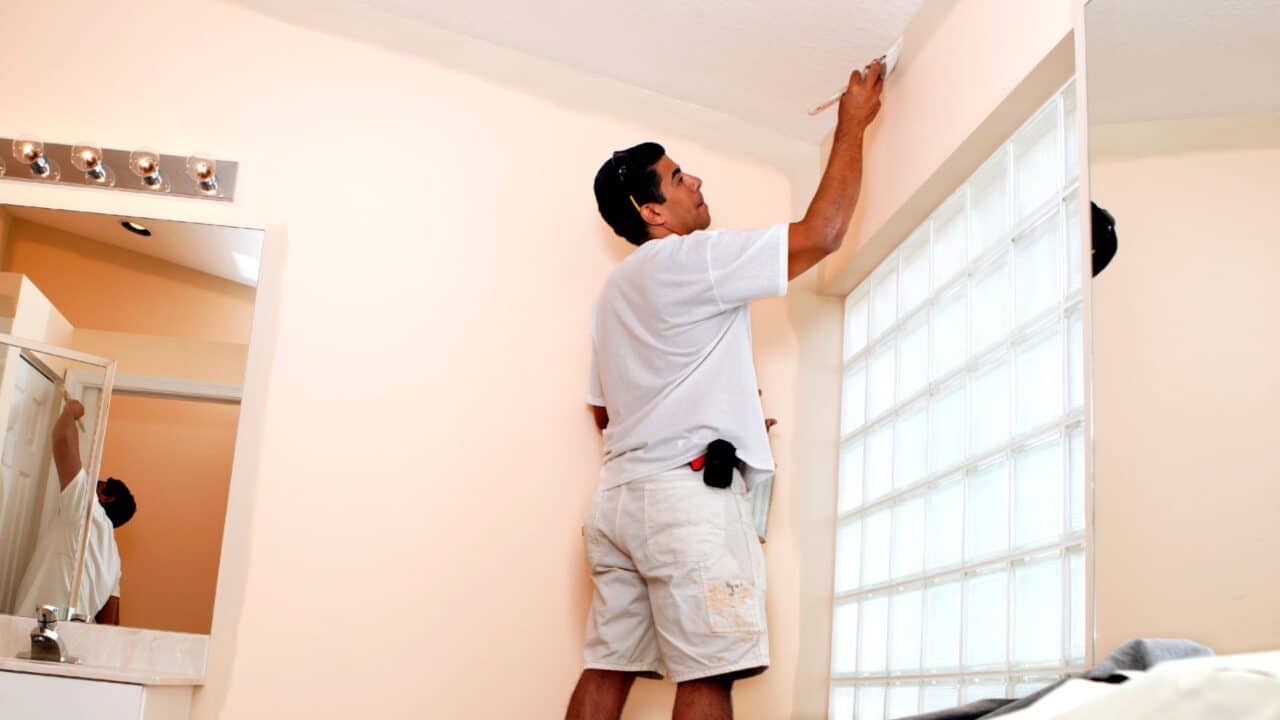To avoid streaks and roller marks in a bathroom, start with proper surface prep, use quality tools, and maintain a consistent application technique. Control lighting, humidity, and drying times to ensure a smooth, even finish.
Introduction
Nothing ruins the satisfaction of a freshly painted bathroom like stepping back to see visible streaks and roller marks. Bathrooms are especially tricky because they combine tight spaces, tricky lighting, and high humidity, which can all make imperfections stand out.
In Northeast Ohio, seasonal factors add more challenges—dim winter light can hide streaks until summer sun exposes them, and cold weather painting can cause slower drying that increases lap marks. This guide walks you through how to get a flawless finish every time.
Step 1: Start with a Smooth Surface
Streak-free painting starts long before the first coat.
-
Clean Walls Thoroughly
Bathrooms attract soap residue, hairspray, and oils. Wash walls with a mild degreasing solution and let them dry completely. -
Sand Lightly
Even if walls feel smooth, a light scuff with a 3M Pro Grade Precision Medium Sanding Sponge helps paint grip evenly. -
Prime If Needed
For color changes or patchy areas, use a moisture- and mildew-resistant primer like Sherwin-Williams PrepRite® ProBlock to create a uniform base.
Step 2: Choose the Right Paint & Sheen
Your paint’s quality and sheen can make streaks more or less noticeable.
-
Higher Sheens (Satin, Semi-Gloss) reflect more light—showing roller marks if you rush.
-
Matte/Flat hides marks better but isn’t as moisture-resistant.
-
In a full bath, stick to a high-quality satin or semi-gloss like Sherwin-Williams Emerald® Interior Acrylic Latex for durability.
Step 3: Use High-Quality Tools
Cheap rollers and brushes shed fibers and apply paint unevenly.
-
Roller Covers — Choose one designed for smooth finishes like the Purdy White Dove 3/8″ Nap Roller Cover.
-
Brushes — A good angled sash brush, like the Wooster Shortcut, keeps cut-in lines crisp without overloading edges.
-
Extension Pole — Keeps pressure consistent and reduces fatigue, helping you avoid uneven roller passes.
Step 4: Master Your Technique
Even the best tools can leave streaks if your method is off.
-
Load Evenly — Dip the roller and roll it on the tray until the nap is uniformly covered but not dripping.
-
Work in Small Sections — Paint 3×3-foot areas, keeping a wet edge so you don’t overlap onto partially dried paint.
-
Roll from Wet to Dry — Start in the wettest part of your last stroke and move into unpainted areas to blend seamlessly.
-
Maintain Light Pressure — Pushing too hard can cause roller lines. Let the roller do the work.
-
Finish with Long, Light Strokes — Smooth over the section without reloading paint to even out texture.
Step 5: Watch Lighting & Drying Conditions
-
Avoid Harsh Overhead Lighting While Painting — It can cast shadows that exaggerate wet roller marks. Soft, even lighting is better for spotting missed spots.
-
Control Humidity — In Cleveland winters, run a fan or dehumidifier after showers before painting. In summer, avoid painting during the steamiest times of day.
-
Respect Dry Times — Applying a second coat too soon can lift or drag the first coat, creating streaks. Follow the manufacturer’s drying recommendations.
Step 6: Finish Strong with the Second Coat
Most streaks disappear with a properly applied second coat.
-
Switch Rolling Direction — If you rolled top-to-bottom first coat, go side-to-side on the second to blend texture.
-
Inspect as You Go — Use a work light to catch streaks while the paint is still wet enough to fix.
Local Bathroom Scenario Examples
Older Cleveland Colonials
Narrow bathrooms with plaster walls may have subtle unevenness—using satin sheen and a quality roller can hide minor flaws while still resisting moisture.
Lake-Effect Humidity Homes
If you’re closer to Lake Erie, humidity lingers—semi-gloss paired with precise roller work prevents mildew-prone streaks near ceilings and corners.
Windowless Basement Baths
Without natural light, streaks can hide until bright overhead LEDs reveal them—check from multiple angles as you paint.
FAQ
Q: Why do I still get streaks even with good paint?
A: It’s often from letting paint dry too much between roller passes—work faster in small, connected sections to keep a wet edge.
Q: Can I fix roller marks after the paint dries?
A: Yes, lightly sand the affected area, wipe clean, and re-roll with a light touch.
Q: Is it better to roll or brush in a bathroom?
A: Roll large areas for even coverage; brush only for tight spots and cutting in. A combination gives the best finish.
Q: Will higher-quality paint alone stop streaks?
A: No—while quality paint helps, streak prevention is mostly about prep, tools, and consistent application technique.

